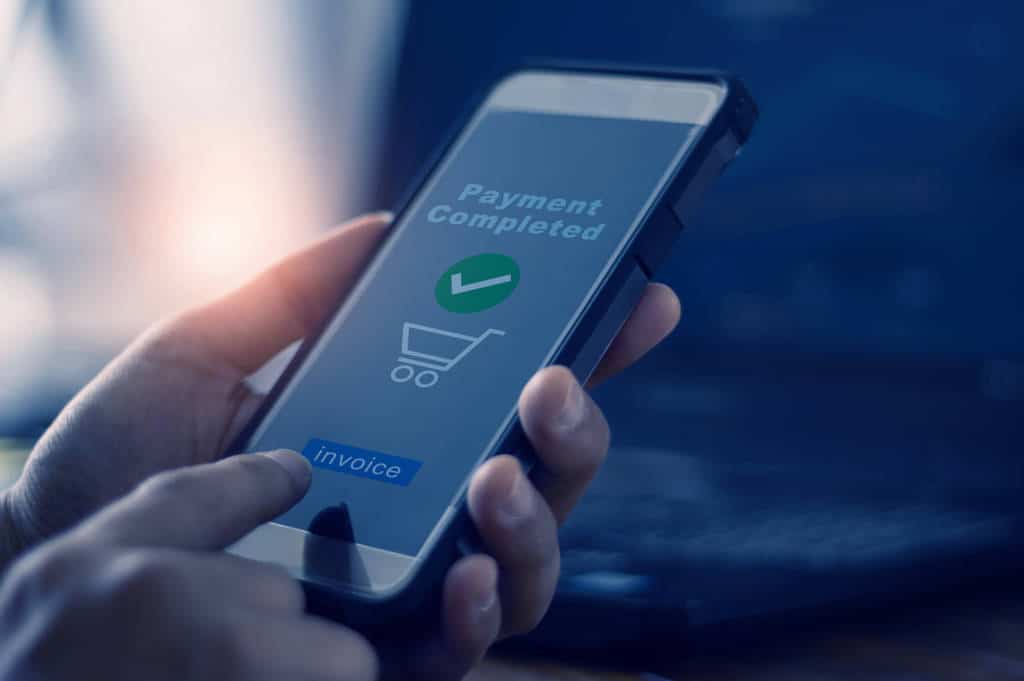Payment systems migrate to the cloud
Today, the four largest banks in the U.S. process their payments in the cloud (i.e. remote data centers that are accessed via a private network and/or the Internet). These institutions have opted to use “private clouds” owned by cloud partners where client data is kept strictly partitioned, versus a “public cloud,” which offers users a shared infrastructure.
And these large banks are not alone.
According to a recent survey, 44 percent fewer companies use in-house software for online payments compared to just two years ago and instead rely on a vendor’s payment software.
Source: Wiese Research survey and Ovum’s Global Payments Insights
In addition, 54 percent of organizations said that they plan to move more of their payment infrastructure to the cloud in the near future. For example, Bank of America recently announced plans to move 80 percent of its technology workloads to the cloud in the next few years. Why are many industry leaders moving their payment infrastructures to the cloud? The key drivers are lowering costs, improving speed to market and catching up with customer demand for new products and services.
Security in the cloud vs in-house data centers
The rapid growth of cloud computing has also been driven by the rock-solid level of security available in the cloud. In fact, according to a 2017 report on cloud security, “on-premise IT infrastructure is more likely to be attacked, more often, and through a broader spectrum of attack vectors than cloud-based infrastructures, countering security concerns about the cloud.”
How does the security of cloud service providers compare with that of in-house data centers? It depends on the type of security being used. A cloud vendor that employs the following 10 cybersecurity practices are well positioned to deliver better security than in-house data centers.
1. The Network Effect: The network effect states that the value of a network increases with the number of users. In the case of cloud security, providers are better able to leverage their security investment and visibility across thousands of clients, compared to an organization processing in-house.
- Identify fraudulent transactions and breaches more quickly
- Combine security investment of thousands of clients to build and run a highly secure software platform used by all
- Participate in InfraGard, a public-private partnership between the FBI and U.S. businesses, dedicated to sharing information and intelligence to protect critical infrastructure
- Coordinate with Financial Services – Information Sharing and Analysis Center, the global financial industry’s resource for cyber and physical threat intelligence analysis and sharing
2. Experience: Cloud software providers can offer a depth of knowledge and experience unmatched by individual institutions.
- They have more years of experience in developing and operating bill payment software compared with individual organizations
- The same company that built the software runs the software
- Software developers and data center operators collaborate
3. Certifications: Look for a provider that is certified to offer the best practices in security.
4. People: The provider’s leadership team and employees should be focused on security.
- A Board of Directors with a risk committee
- Chief Risk Officer operating autonomously from all other groups
- Annual security training for all employees
5. Policies: Make sure your provider’s security infrastructure is designed around standards.
Implements ISO 27001/27002 and National Institute of Standards and Technology (NIST) Cybersecurity frameworks
- Standardizes information access, retention and destruction
- Utilizes an inventory system for hardware and software
- Performs vulnerability scanning and penetration testing
- Has a pandemic plan for business continuity and disaster recovery plans
6. Software development: The provider uses bullet-proof software and best industry practices.
- Upgrades software to latest version regularly (this was one of the problems that led to a recent high-profile breach)
- Build systems based on the Payment Card Industry Data Security Standard (PCI)
- Scans systems before going live
7. Detection: The provider depends on automated detection and attack response for protection.
- Can identify distributed denial of service (DDoS) attacks, worms, Trojans and port scans
- Finds abnormal activity through modeling
- Relies on Automated attack response
8. Access: The provider carefully controls cloud access.
- Keeps client data separate with private cloud using a partitioned architecture
- Owns and operates its own data centers
- Employs biometric data center access
- Uses role-based access
- Has 24×7 closed-circuit television monitoring
- Uses a secure network for client access
9. Defense-in-depth with a layered security model:The provider erects multiple, overlapping layers of defense.
10. Data: The provider secures critical data.
- Tokenizes sensitive information (i.e. use a “proxy”)
- Encrypts data
- Uses Hardened computers
- Isolates internally with virtual local area networks
Cloud payments simplify compliance
In addition to offering robust security, cloud-based payment systems make compliance easier to achieve for several reasons. First, companies are no longer storing sensitive customer payment data on-premise, which limits the scope of PCI assessments and audits. Second, the provider is able to make the latest investment in compliance infrastructure and spread the cost across multiple clients, while also utilizing the best client practices.
For example, one company reduced call center PCI compliance costs by 80 percent when customers entered their credit card numbers into a cloud-based system rather than speaking card numbers out loud. In another example, customers using a cloud-based bill payment solution were able to realize 19 percent savings on security and compliance costs.
In addition, an experienced cloud payment provider keeps up to date with ongoing changes to regulations – some of those shown below.
Cloud payments improve performance
You can develop and bring new innovative features to market more quickly with the cloud than building it yourself in-house. Organizations often see an improvement in their performance as a result. For example, one of the world’s largest companies improved their collections performance by a factor of five when they made the move from an internal collections website to a cloud system.
With improved performance, lower compliance costs and robust security, I expect that more organizations will follow Bank of America’s example of shifting 80 percent of their technology into the cloud.



